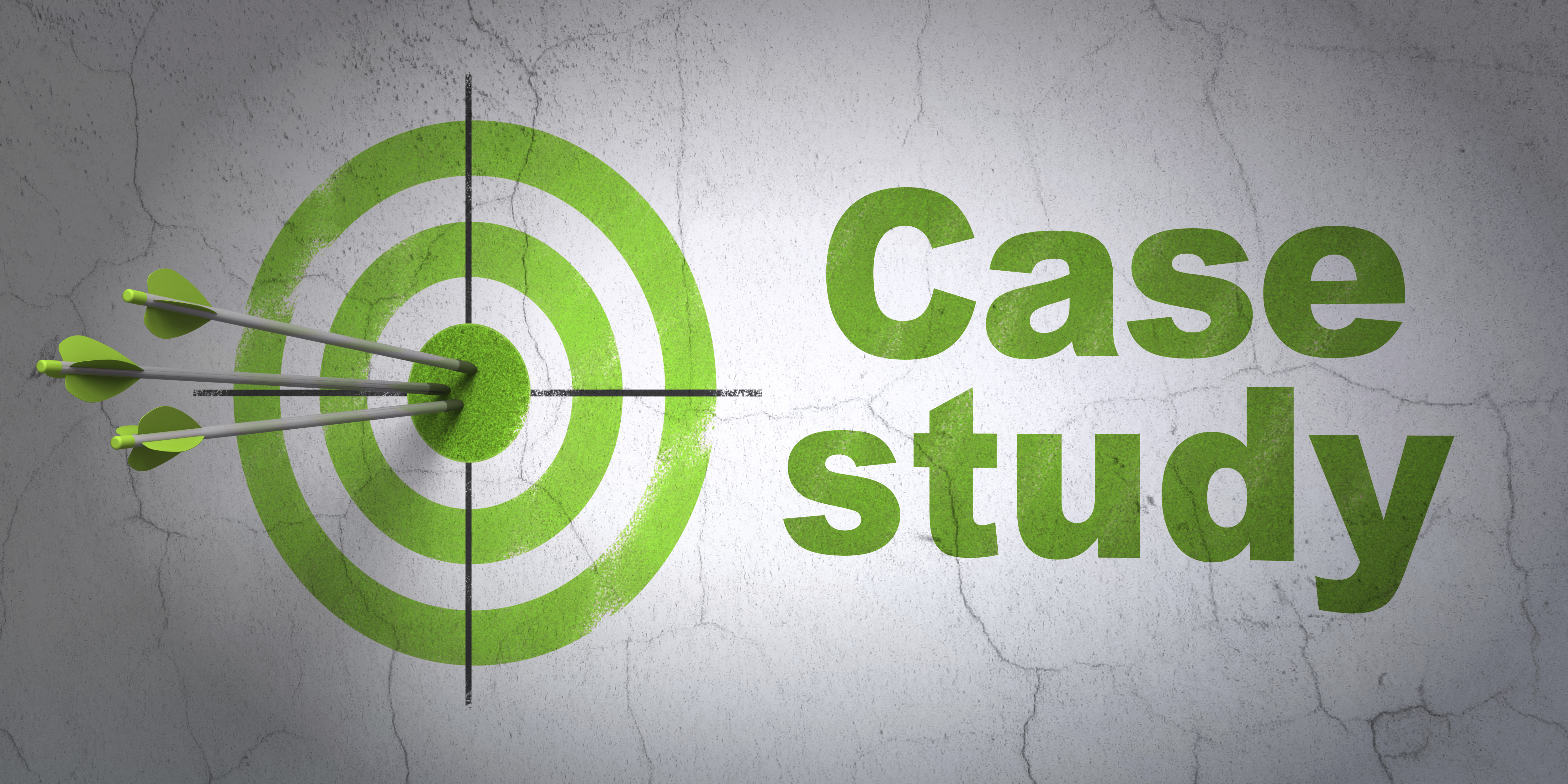How to Write a Winning Case Study
Use Your Success Stories to Generate Leads and Sales
If you’ve been in business for more than a year, then you should have a wealth of success stories you can tell in the form of people who liked your product or were dazzled by your service.
Maybe those customers were kind enough to thank you and tell you how impressed they were. Maybe not. Either way, if you know they were pleased with your work, you should consider writing a case study about your accomplishment.
The Case for Case Studies
Everyone loves a good story. And that’s just what a case study is — the story of how you solved a challenging problem for a customer.
Case studies are a terrific promotional tool. What makes them so effective is that on the surface, they don’t appear to be self-serving. Unlike a brochure or an ad, they’re written in an educational tone. They come across as informative, factual and believable, while also engaging the reader through storytelling. Case studies are the perfect complement to your other more “salesy” marketing tools.
Why Case Studies Work
Ideally, the target readers of your case study should be able to relate to the scenario described. They can learn from someone else’s similar experience and take pleasure in knowing they’re not alone with their problem. By examining a real-life example, prospective clients get to see proven results. This lends credibility to your marketing materials, demonstrating that your product does what you claim it will.
After reading the case study, your prospects will know you are capable of understanding their situation and can feel their pain. The closer your case study matches the typical problem of the target audience, the greater the level of affinity the readers will feel with you and the more effective your case study will be in persuading them to buy your product or service.
How to Use Case Studies
Companies in the B2B space use case studies to encourage purchasing decisions for their products and services. Data sheets offer product specifications, data and statistics. Those details are important for B2B buyers who need to know that the numbers add up in order to make informed decision for their businesses.
With structure, depth and length, case studies deliver enough information and perspective to help move the sales process along. They use a common PAS (Problem, Agitation, Solution) scenario, culminating in results that serve as evidence of a product or service’s effectiveness.
Case studies are a tested and proven strategy. In fact, “a staggering 73% percent of customers have used case studies to make a B2B buying decision within the last 12 months” according to G2 Crowd.
It’s Not Bragging if It’s True
I know, you don’t like to toot your own horn. Most people don’t. But if you don’t, who will? Nobody! So get over your modesty, and tell the world what you do and how well you do it.
A case study isn’t you just saying, “Hey I’m terrific.” It’s you showing them just how terrific you are. You’re not bragging. You’re simply using a true-life example that illustrates your points and proves your claims.
Keep in mind too, your case study can be written or it can be video. With video, you’re allowing prospects to see and hear positive statements about your company from an existing client, which can be even more convincing.
Case Study Format
A case study should be told like a story. with a beginning, middle, and end. It’s essentially a before-and-after snapshot of a customer’s business – complete with quotes, data and photos or videos. The combination of written and visual elements can be powerful.
Start out by describing the problem or situation. Take the reader along on your journey. Give the necessary background to explain the situation and include any relevant details that will help paint the picture. You want your story to be interesting and believable.
Next explain the challenges, the variables that made this particular scenario so complex. Describe any extenuating circumstances and potential risk factors.
Once the problem has been established, you’ve set the scenario for you to arrive on the scene as the superhero, ready to leap tall buildings, stop criminals in their tracks, and most importantly, solve “the problem.”
Okay, maybe that’s a bit of hyperbole, but the point of the case study is to describe a problem and a solution, which you provided. This is one time it’s okay to be the star of the story. Tell the reader what you did to save the day. Just make sure you offer meaningful proof that supports your assertions.
Include statements made by your customer. Quotes will add credibility to your story. Maybe your customer has already told you how pleased he was with your work. Include his words. It’s okay to paraphrase as long as you have him approve the final quote before publishing.
Use more than one quote, if possible. Perhaps one speaks to the customer’s overall satisfaction with the job done. But another one or two could reference a specific detail that he was especially pleased with.
Explain how your solution was implemented and any problems encountered along the way. If you can quantify results, include numbers. Photos are a welcome addition too and can go a long way toward supporting your comments and helping a potential buyer visualize how much their business can change if they invest in your solution.
Finally, give the results. Describe the aftermath, the happily-ever-after thanks to your talents and hard work. Ultimately, you want the reader to have recognized himself in the problem and now see your solution and think, “Wow! If that worked for them, maybe it can work for us. I want in!”
How Long Should Your Case Study Be?
Your case study should be as long as is necessary to successfully convey the situation. No more, no less. Sometimes that’s just a single paragraph or two, barely longer than a testimonial quote. Or it can be several pages.
I recently wrote one case study for a real estate company about a hotel converted into condominiums, and it was 12 pages long. In addition to the text, it included several charts, graphs, numerical data and photos. Was it too long? Not if you’re the real estate firm’s target customer, someone interested in converting a hotel into a condominium. In that case, you’ll likely be hanging on its every word.
Unique, Original Content
In today’s highly competitive market, companies must continually be creating new content. That content allows their sales team to reach out to prospects multiple times, always offering “the latest information.”
Every case study is unique. Because it’s a story about one of your customers and their particular situation, the case study is original and not something your competitor can easily copy like sales materials. It’s therefore also a great way to differentiate your product or service from the competition.
Don’t Forget to End Your Case Study with This
Now you’ve told the reader what you’ve accomplished. You’ve provided solid proof of your capabilities. The reader has begun to like you and trust you. So it’s time to seal the deal.
Insert your call to action. Tell the reader to contact you to discuss his own situation. No need for a hard sell here, just a gentle push to let the reader know that you can do for him what you’ve already done for the person or business in the case study.
Where to Publish Your Case Study
Once your case study is written and has been approved by the customer featured in it, you can then begin the process of getting the word out. Ideally, you want to have multiple avenues of distribution. You’ve put a lot of work into this case study. You may as well get it into the hands of as many potential customers as possible.
You can start by publishing your case study on your website. Or, you can offer it as a free give-away on your website. To receive it, the reader just has to provide his name and email address. Now you have a lead, someone who has expressed an interest in your product or service by requesting the case study. Down the road, you may want to follow up with a sales call to him.
You can also mail your case study to prospects. Email is okay or create printed versions and send them via regular mail.
If you create printed copies, then you can also give them out in face-to-face meetings and at trade shows. You can include the case study in your newsletter. Another option is to publish only a short summary in your blog and offer to provide the full case study upon request.
Finally, you may be able to repurpose the information from the case study into an effective press release. As you’ll soon discover, case studies are powerful marketing tools, so use them every way that you can.
How to Get Started, Hire a Case Study Writer
By now you realize the benefits of adding case studies to your arsenal of promotional literature. And you should have some idea of what information your case study can include. So, are you ready to put pen to paper? Or does the idea of writing your own case study make you uncomfortable? Perhaps you just don’t have enough time to get to it. Then hire a pro. A freelance case study writer can get the job done.
You should be able to give the case study writer a quick overview of the situation and then provide her with the names and phone numbers of the customers you want her to interview on your behalf. Remember, you’ll have a chance to review every word she writes, so this isn’t a scary proposition.
Concerned about cost? The expense of contracting a case study writer is minimal compared to the potential revenue that case study could generate. Marketing tools don’t cost you money; they make you money!
So stop stalling and instead start going through your client list to develop a list of potential case study candidates. The faster you get those case studies written and working for you, the sooner you’ll have yet another edge over your competition.
* * *
Testimonial
Excellent work
Copy approval of the skincare article went very smoothly, and we don't need to make any further changes. Thank you for your excellent work!
Nozomi Araki
International Corporate Communications
Brain Center Inc.
Tokyo, Japan



